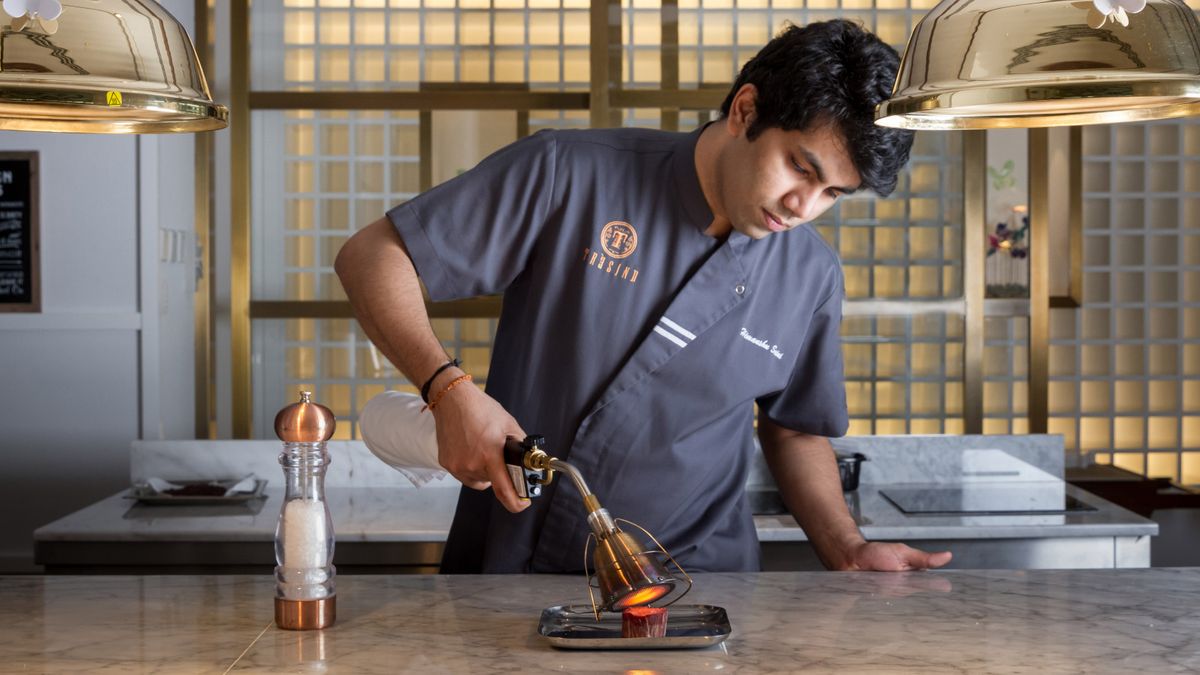You need time on your hands when you’re heading to Trèsind Mumbai--the Indian outpost of the eponymous Dubai restaurant. The 14-course tasting menu is a modern interpretation of classic Indian dishes that excite you as much as they test your patience, but you will be glued to your seat in the anticipation of what’s next. That, we believe, is a sign of a good restaurant with great food.
The captain who steers this ship, across the sea and here, is the young chef, Himanshu Saini. Many consider him the new face of Indian cuisine on international waters with him raking in accolade after accolade. The most recent ones are the coveted Michelin star for Trèsind Studio Dubai as well as a ranking in the World’s 50 Best Restaurants.
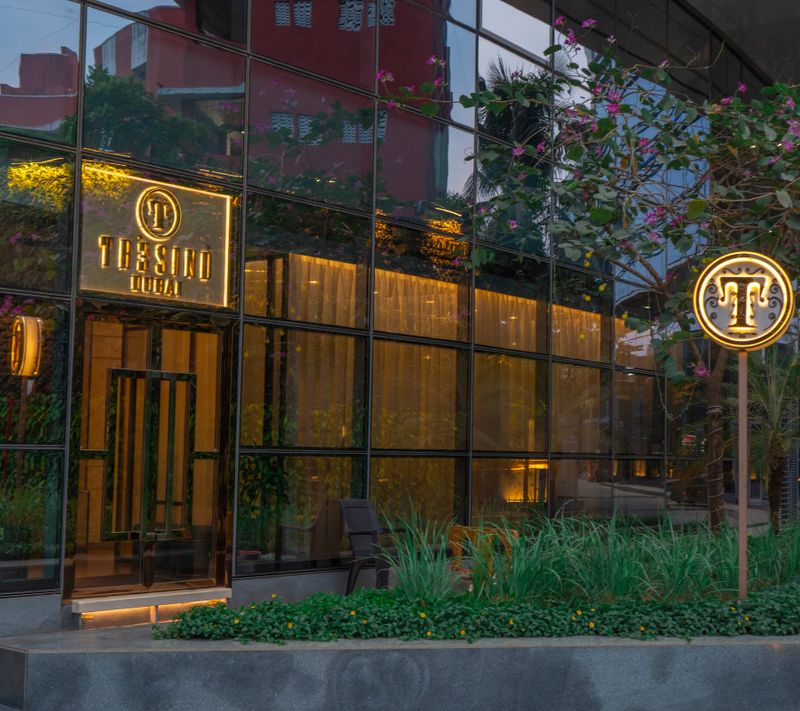
It is not surprising considering Saini has learnt the ropes of innovation and experimentation with Indian cuisine from none other than chef Manish Mehrotra of Indian Accent. Despite his success you can hear the aspiration and dreams he has for himself and his food.
We were at Trèsind Mumbai to try out their new menu, which continues to retain the classics along with some new items. After the meal, it became imperative to go back to Saini to understand how he brought together the delightful jigsaw puzzle of a 14-course menu together.
Edited excerpts:
1. How would you break down Trèsind Mumbai’s 14-course menu?
It’s a pretty long meal; we wanted to start off with some snacks to whet the appetite. The snacks in the first few courses are a take on Indian street food with the sweet, sour and tangy flavours and textural changes as well. The pani puri is refreshing but it also increases your appetite. We also have a few starters such as the ravioli that is made from butternut squash and served on crispy spinach with sage in the form of chutney. After that, we move on to the other courses.

2. You’ve not overhauled the whole menu, some of the classic dishes are still there. Was there a reason behind it?
There are so many dishes we have not been able to take off the menu, because our diners look forward to it. The khari and nihari still there, and the khandvi ice cream, because they have become staples and part of our identity. They’ve become classics for us, it’s just logical to keep them.
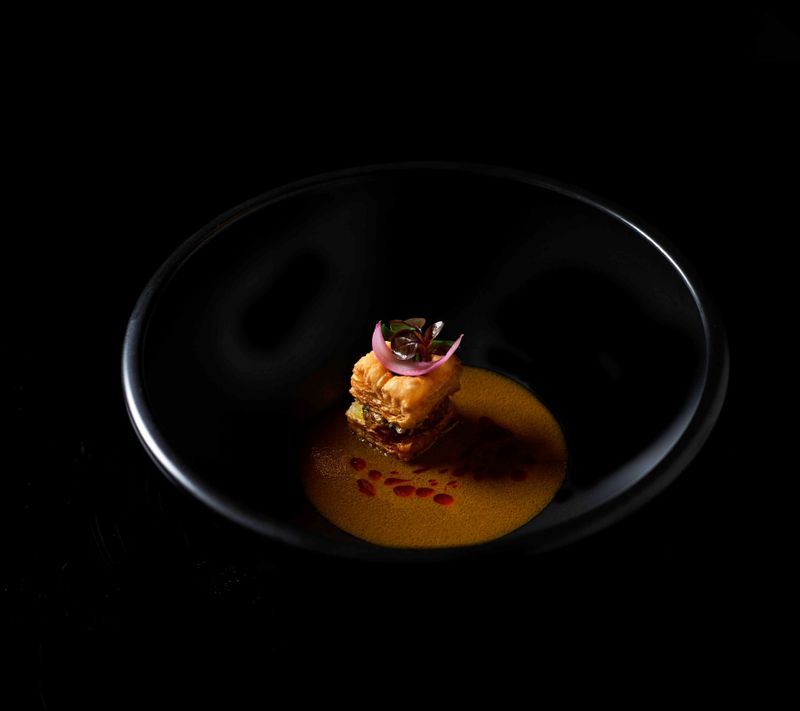
3. The khichdi of India is also a Trèsind staple. How did you think of combining such myriad flavours in the humble gruel?
Its more to support the story that certain ingredients don’t go in a khichdi but then khichdi can absorb any ingredient. While some of the ingredients are to represent different Indian states, but most of them add a dimension to the dish. For example, green apple is not a traditional ingredient in a khichdi but it adds acidity and crunchiness. So, ingredients are added to enhance the taste and elevate the comfort food. I guess that is why people are such fans of the dish.
4. You also served a Bengali favourite, koraishutir kachori with kosha mangsho, with a side of missi roti and chimichurri. How did you think of this curious combination?
The idea was to serve a wholesome dish because usually the kachori is fried and people feel out of place when they have such things dishes in a restaurant. Our kachori is not fried and is made with amaranth.
In India people have a craving for bread and serving tandoori roti was not our thing. That’s when I thought of missi roti, since it doesn’t need to go along with any curry, it goes well with simple butter and chutney. It ticked all the boxes for us since we have a rice dish in the khichdi and an Indian bread in the form of missi roti. It’s my job to make sure that we are not disappointing anyone.
5. Do you think the stereotype of Indian food in restaurants will change?
We need to have better replacements to break the dependency on overdone dishes. For example, at Trèsind, we have never served tandoori roti. We used to serve kosha mangsho with kachori only and we used to have the Malabar parottas that was served with coastal dishes.
I want to break the notion that tandoori breads are the only bread in India that people want to eat. So many people told me that guests will not be happy with this and that’s the only reason I put missi roti too so that there is some comfort. I want them to go home happy as well, even though there are many twisted and experimental dishes.
6. Your dessert, ‘Textures of Milk’, uses Yakult as one of the elements. How did that happen?
When we were thinking about this dish, we wanted to bring in every element of milk, but it has to taste different and have also have textural difference. So, we have Stracciatella, which is chewy, the milk cake is bit caramelised, the foam of the milk is airy and then the crisp of the milk also has some texture. That leaves the ice-cream, which gives the whole dish the direction. I knew, we can’t be having just the milk ice-cream or any other flavour for that matter—it would have deviated from the dish. That is when I remembered Yakult and the flavour of the probiotic from my childhood—it just clicked that maybe that form of milk is something that doesn’t take away from the vision of ‘Textures of Milk’ as the dessert but highlights the nuances of the other elements.
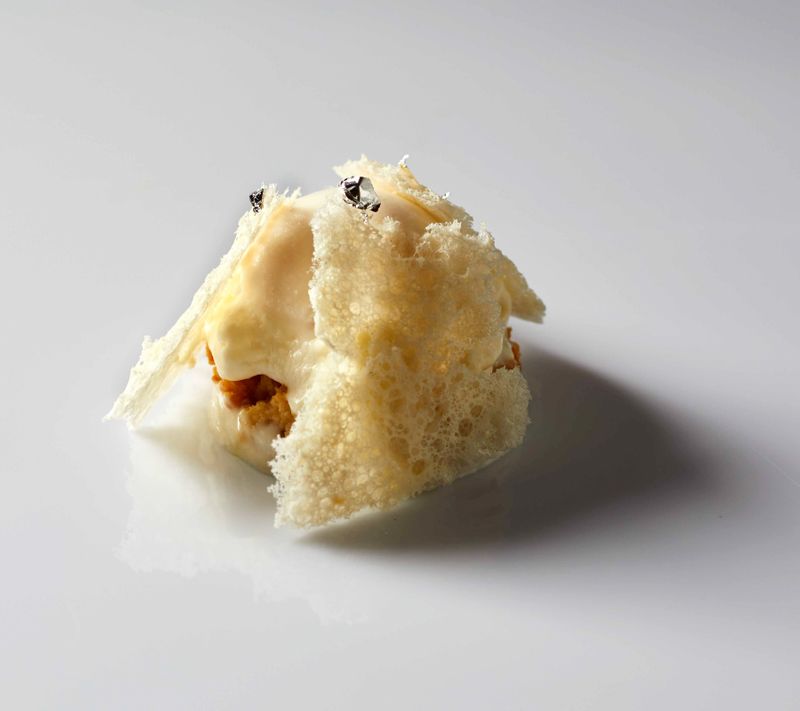
7. How do you ideate for a new menu? How many of the classics stay and how many new dishes are added?
In Mumbai, I always go with reverse psychology because half the time people come in and say that we only eat chicken and mutton, or we will not eat seafood. I don’t know how people will react if they see duck on the menu and I am scared to put pork on the menu; I don’t want to hurt anybody’s sentiments. I am usually left with some kind of shellfish, chicken, or mutton and then I think we figure out other elements of the menu. The Dubai menu is very different as is the approach. But at the end of the day, the most important thing is to have patrons come back and for that, I need to be accepting of what people want.

8. What would be the three dishes from Trèsind Dubai that you would love to bring to Mumbai?
There is a duck-based cafreal that we served with nasturtium leaf in Dubai. The leaf is flown in twice in a week to use from the Alps. The peppery notes of the leaf go very well with duck. The cafreal masala also stands out better with duck. The other dish is a kebab dish we call carpeta—it is like the greasy scrape-off remnants of a pan on which the kebabs are cooked. It is so tasty but I don’t know if people will accept it in a ‘fine-dining’ restaurant in Mumbai.
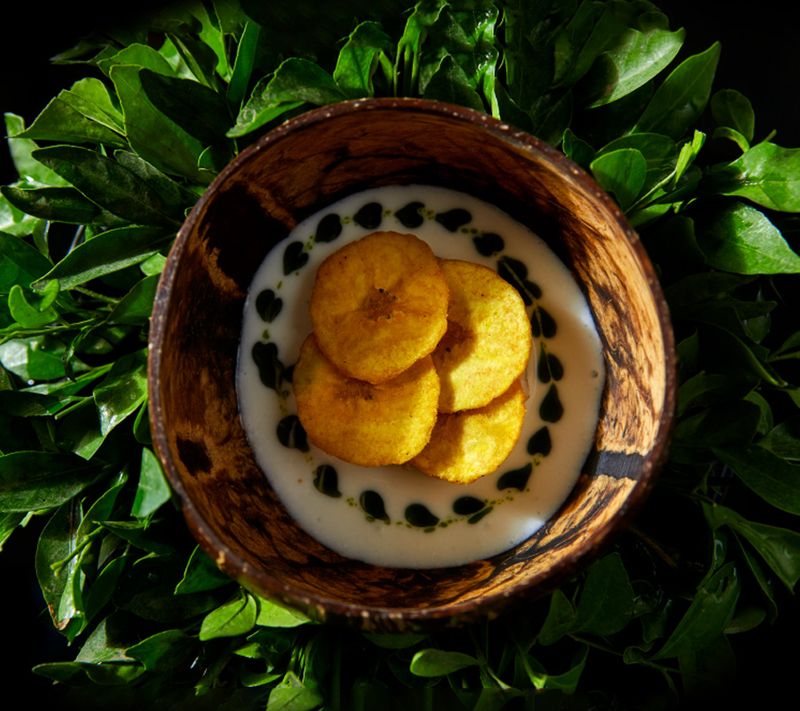
9. Is it disappointing to see the average Indian diner unwilling to try or move out of their comfort zone?
No, I’m not disappointed because food is something so subjective and people have different palates. It is a challenge unique to me because Trèsind as a concept and experience is very different from other fun-loving successful restaurants in the city. With us, there is a seriousness but then we have to satisfy everyone while being innovative—it’s a delicate balance. I have seen restaurants that are so rigid that they end up closing doors for not being accommodating. I think we all need to be flexible we are hereafter all to serve people.


